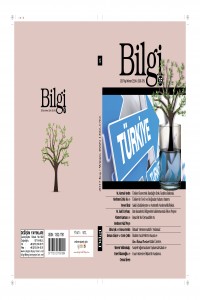Abstract
Bu çalışmada Türkiye’de terörizm ve doğrudan yabancı yatırım arasındaki ilişkiler eşbütünleşme ve nedensellik testleriyle, 1980-2015 dönemi için incelenmiştir. Seriler arasındaki ilişkiler, mevcut literatür-den farklı olarak önce Hatemi-J ve Irandoust (2012) tarafından geliştirilen, saklı eşbütünleşme yaklaşımıyla incelenmiştir. Bu analiz sonucunda terörizm ve doğrudan yatırımlar arasında eşbütünleşme ilişkisinin olmadığı belirlenmiştir. Daha sonra, seriler arasındaki asimetrik neden-sellik ilişkileri Hatemi-J (2012) yöntemiyle araştırılmıştır. Bu analiz sonucunda ise literatürdeki mevcut çalışmaların bulgularına ters düşecek biçimde terör eylemleri ile ekonomik büyüme arasında herhangi bir nedensellik ilişkisi olmadığı tespit edilmiştir. Bütün bu bulgular birlikte değerlendirildiğinde, Türkiye özelinde terörist saldırıların doğrudan yabancı yatırım davranışlarını etkilemediği sonucuna ulaşılmaktadır.
References
- Dickey, David A. and Wayne A. Fuller (1981), “Likelihood Ratio Statistics for Autoregressive Time Series with a Unit Root”, Econometrica, 49 (4): 1057-1072. Abadie, Alberto and Javier Gardeazabal (2008), “Terrorism and the World Economy,” European Economic Review, 52 (1): 1-27. Ak, Mehmet Zeki, M. Kemal Aydın ve Mustafa Dindar (2015), “Terör ile Büyüme Arasındaki İlişki: Literatür İncelemesi”, Bilgi, 31: 1-16. Bandyopadhyay, Subhayu, Todd Sandler and Javed Younas (2014), “Foreign Direct Investment, Aid, and Terrorism” Oxford Economic Papers, 66 (1): 25-50. Enders, Walter and Todd Sandler (1996), “Terrorism and Foreign Direct Investment in Spain and Greece,” Kyklos, 49 (3): 331-352. Enders, Walter and Todd Sandler (2006), The Political Economy of Terrorism, Cambridge: Cambridge University Press. Enders, Walter, Adolfo Sachsida and Todd Sandler (2006), “The Impact of Transnational Terrorism on U.S. Foreign Direct Investment,” Political Research Quarterly, 59 (4): 517-531. Granger, Clive W. J. and Gawon Yoon (2002), “Hidden Cointegration”, Department of Economics Working Paper, San Diego: University of California. Hatemi-J, Abdulnasser and Manuchehr Irandoust (2012), “Asymmetric Interaction between Government Spending and Terms of Trade Volatility: New Evidence from Hidden Cointegration Technique”, Journal of Economic Studies, 39 (3): 368-378. Hatemi-J, Abdulnasser (2012), “Asymmetric Causality Tests with an Application”, Empirical Economics, 43 (1): 447-456. Li, Quan (2015), “Political Violence and Foreign Direct Investment” [içinde] Regional Economic Integration Research in Global Strategic Management, Volume 12, Elsevier: 225-249. Omay, Tolga, Bahar Araz-Takay, Ayşegül Eruygur ve İlker Kılıç (2013), “The Effects of Terrorist Activities on Foreign Direct Investment: Nonlinear Evidence from Turkey”, Review of Economics, 64 (2): 139-158. Powers, M. and Seung-Whan Choi (2012), “Does Transnational Terrorism Reduce Foreign Direct Investment: Business-related versus Non-business-related Terrorism”, Journal of Peace Research, 49 (3): 407-422. Wagner, Daniel and Dante Disparte (2016), Global Risk Agility and Decision Making, London: Palgrave Macmillan. Hacker, R. Scott and Abdulnasser Hatemi-J (2006), “Tests for Causality between Integrated Variables Using Asymptotic and Bootstrap Distributions: Theory and Application”, Applied Economics, 38 (13): 1489- 1500. Yılancı, Veli ve Şeref Bozoklu (2014), “Türk Sermaye Piyasasında Fiyat ve İşlem Hacmi İlişkisi: Zamanla Değişen Asimetrik Nedensellik Analizi”, Ege Akademik Bakış, 14 (2): 211-220. Zivot, Eric and Donald Andrews (1992), “Further Evidence on the Great Crash, the Oil-Price Shock and the Unit-Root Hypothesis”, Journal of Business Economic Statistics, 10 (3): 251-270.
Abstract
References
- Dickey, David A. and Wayne A. Fuller (1981), “Likelihood Ratio Statistics for Autoregressive Time Series with a Unit Root”, Econometrica, 49 (4): 1057-1072. Abadie, Alberto and Javier Gardeazabal (2008), “Terrorism and the World Economy,” European Economic Review, 52 (1): 1-27. Ak, Mehmet Zeki, M. Kemal Aydın ve Mustafa Dindar (2015), “Terör ile Büyüme Arasındaki İlişki: Literatür İncelemesi”, Bilgi, 31: 1-16. Bandyopadhyay, Subhayu, Todd Sandler and Javed Younas (2014), “Foreign Direct Investment, Aid, and Terrorism” Oxford Economic Papers, 66 (1): 25-50. Enders, Walter and Todd Sandler (1996), “Terrorism and Foreign Direct Investment in Spain and Greece,” Kyklos, 49 (3): 331-352. Enders, Walter and Todd Sandler (2006), The Political Economy of Terrorism, Cambridge: Cambridge University Press. Enders, Walter, Adolfo Sachsida and Todd Sandler (2006), “The Impact of Transnational Terrorism on U.S. Foreign Direct Investment,” Political Research Quarterly, 59 (4): 517-531. Granger, Clive W. J. and Gawon Yoon (2002), “Hidden Cointegration”, Department of Economics Working Paper, San Diego: University of California. Hatemi-J, Abdulnasser and Manuchehr Irandoust (2012), “Asymmetric Interaction between Government Spending and Terms of Trade Volatility: New Evidence from Hidden Cointegration Technique”, Journal of Economic Studies, 39 (3): 368-378. Hatemi-J, Abdulnasser (2012), “Asymmetric Causality Tests with an Application”, Empirical Economics, 43 (1): 447-456. Li, Quan (2015), “Political Violence and Foreign Direct Investment” [içinde] Regional Economic Integration Research in Global Strategic Management, Volume 12, Elsevier: 225-249. Omay, Tolga, Bahar Araz-Takay, Ayşegül Eruygur ve İlker Kılıç (2013), “The Effects of Terrorist Activities on Foreign Direct Investment: Nonlinear Evidence from Turkey”, Review of Economics, 64 (2): 139-158. Powers, M. and Seung-Whan Choi (2012), “Does Transnational Terrorism Reduce Foreign Direct Investment: Business-related versus Non-business-related Terrorism”, Journal of Peace Research, 49 (3): 407-422. Wagner, Daniel and Dante Disparte (2016), Global Risk Agility and Decision Making, London: Palgrave Macmillan. Hacker, R. Scott and Abdulnasser Hatemi-J (2006), “Tests for Causality between Integrated Variables Using Asymptotic and Bootstrap Distributions: Theory and Application”, Applied Economics, 38 (13): 1489- 1500. Yılancı, Veli ve Şeref Bozoklu (2014), “Türk Sermaye Piyasasında Fiyat ve İşlem Hacmi İlişkisi: Zamanla Değişen Asimetrik Nedensellik Analizi”, Ege Akademik Bakış, 14 (2): 211-220. Zivot, Eric and Donald Andrews (1992), “Further Evidence on the Great Crash, the Oil-Price Shock and the Unit-Root Hypothesis”, Journal of Business Economic Statistics, 10 (3): 251-270.
Details
| Primary Language | Turkish |
|---|---|
| Journal Section | Articles |
| Authors | |
| Publication Date | September 10, 2017 |
| Submission Date | April 18, 2017 |
| Published in Issue | Year 2017 Issue: 2 |
Twitter Google Scholar Academia.edu
@DergisiBilgi Bilgi Google Scholar Account Bilgi Dergisi Academia.edu Hesabı
This work is licensed under a Creative Commons Attribution 4.0 International License.



